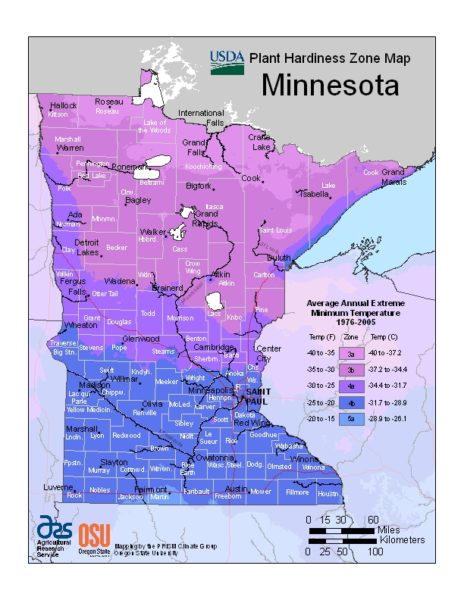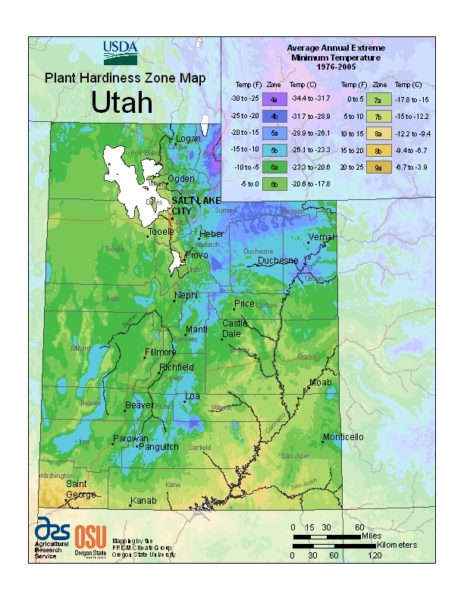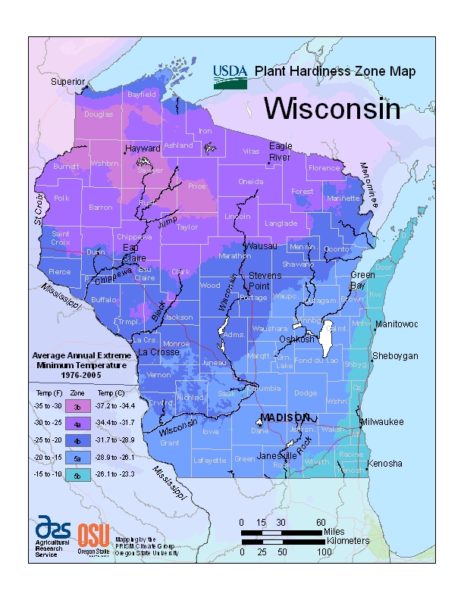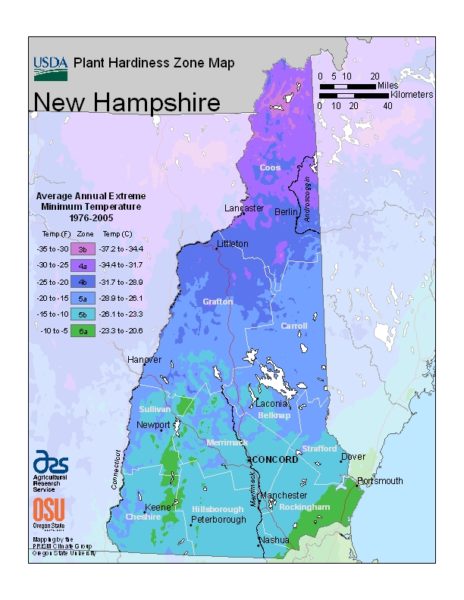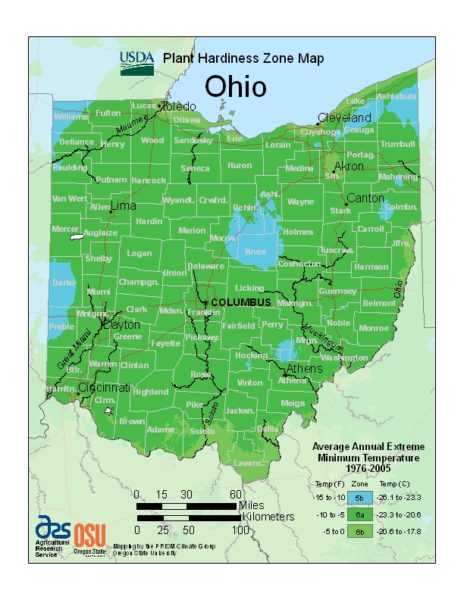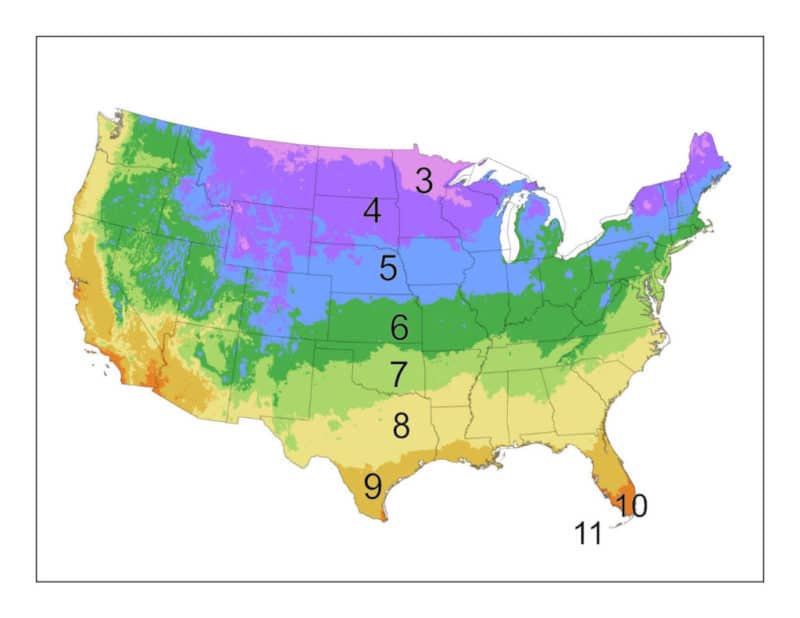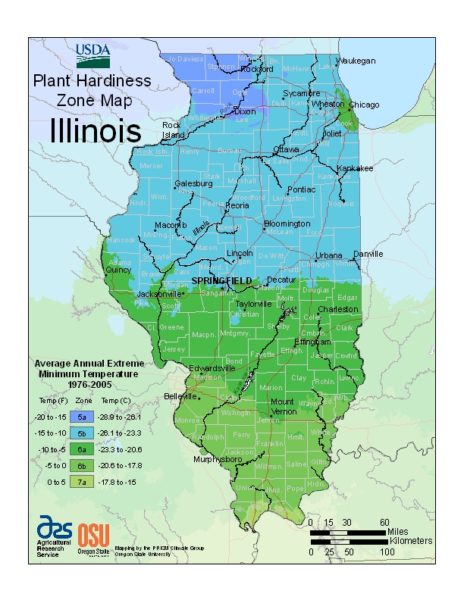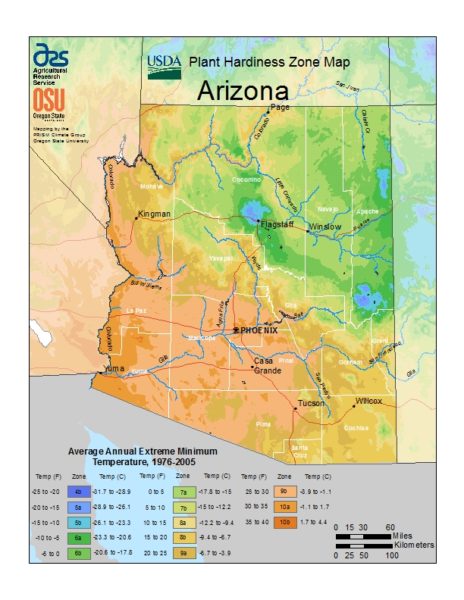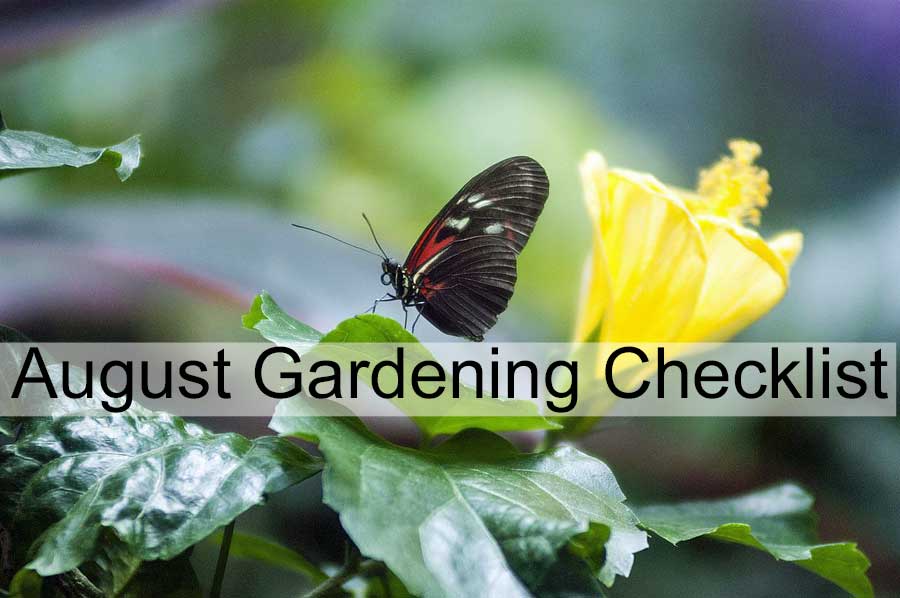
As I sit down to write this post about August gardening tips, I find that August surfaces mixed emotions. On one hand, our garden is coming into its own: there’s the thrill and anticipation of the summer holidays, the promise of freedom from work, spontaneous visits from friends and the opportunity to sit outside drinking wine until darkness descends. On the other hand, there’s the dread of what might happen to the garden if we venture too far for too long, compounded by a creeping sense that the game is almost over. Such unsettled feelings stem from my childhood when summers seemed so long and yet too short, the looming shadow of ‘back to school’ reaching towards me as every sun-soaked day passed.
This article first appeared in ‘The Frustrated Gardener’, https://frustratedgardener.com/2022/08/01/your-garden-in-august/
There’s an inescapable melancholy about August. Even if the month begins bright and breezy, it always ends tired and weary. August is a watershed moment, a bittersweet interlude when gardeners prepare to bid farewell to summer and start to embrace autumn. As a lover of spring with its urgent sense of vigour and renewal, I struggle to accept the slowing momentum and ultimate reversal of the year’s energy. If there was an idiom that defined August for me it would be ‘all good things must come to an end’.
But, assuming you’re reading this when the month is still young, there’s everything to play for and much to celebrate. After all, if you’d spent months climbing to the summit of a mountain you wouldn’t spend those precious moments looking down but gazing out and savouring the moment. Although the nights are noticeable drawing in, it’s still warm and balmy. Gardens and allotments will be reaching their peak volume and visual strength before they slip into the soft, frayed airiness of autumn. How fresh your garden looks now will depend on how rainy it’s been and how much watering you’ve been prepared to do. It’s that Palm Springs moment when the difference between those areas that have received water and those that haven’t become apparent. 2022 has already exceeded 1976 for lack of rainfall so here in the South of England, we are precariously close to drought conditions.
This Hampton Court Garden Festival show garden suggests how gardens might look in a more drought-prone future.
Unless you’re admirably forward-thinking and have created a completely drought-tolerant garden, some degree of watering is going to be necessary. If you’ve got water stored in water butts, use it. If you are able to collect grey water from washing up or showers then use this next. I even use the water that’s left in my bedside glass to water my houseplants each morning. Anything is preferable to putting more strain on our precious water supply.
As I mentioned last month, the name of the game is prolonging the summer display for as long as possible by watering, weeding, deadheading, pruning, clipping, mowing and filling any gaps that emerge. It doesn’t take a lot of brainpower, but a degree of tidiness will keep the garden from descending into anarchy. Above all, don’t be despondent if you return home from holiday to a scene reminiscent of Manderley. Any wilting, rampant growth and messiness is likely to be superficial. Give yourself a couple of hours and you’ll soon have everything under control again.
August Gardening Tips
- Plan – plant moves to be completed in autumn or spring, spring bulb displays, holiday watering cover if you’re away in September.
- Sow – hardy annuals including larkspur, antirrhinum, cornflower and nigella (love-in-a-mist). Salad leaves, radish, rocket, parsley, spring cabbage and winter spinach.
- Take Cuttings – penstemon, berberis, ceanothus, choisya, hebe, rosemary, lavender, philadelphus and viburnum.
- Plant – container-grown shrubs and perennials (followed by copious watering to get them settled), autumn-flowering bulbs such as colchicums, autumn crocuses, cyclamen and nerines.
- Prune – wisteria, rambling roses (after flowering), trained apple and pear trees, lavender, hardy geraniums and lady’s mantle, hedges of most kinds (late in the month if you can).
- Harvest – tomatoes, cucumbers, sweetcorn, beetroot, carrots, chillies, courgettes, French beans, runner beans, Swiss chard, onions, raspberries, blackberries, plums, plus seed from flowers and vegetables that you’d like more of or wish to share with friends.
- Pick – dahlias, sweet peas, zinnias, cosmos, gladioli, pinks and chrysanthemums.
- Make – jams, chutneys, preserves and pickles. Bag up seeds to give as gifts at Christmas.
- Buy -pruning tools, shears, daffodil bulbs, ice creams, sunscreen.
- Enjoy – taking a short break from your garden (we all need it from time to time!), barbecues, family gatherings, rounders, swing ball, afternoon siestas, eating your own produce, picking home-grown flowers.
- Visit – as many gardens as you can! Now is a great time to see other gardens in their prime and gather ideas for your own.
Further Advice From Dan Cooper Garden
Simple Summer PruningSimple Summer Houseplant CareHow To Help Your Garden Survive A HeatwaveHow To Cut and Care for Summer FlowersHow To Water WiselyIn The Know – Deadheading
Many houseplants will enjoy a short spell outside in August.
Indoors
Everything I wrote about in July still stands. The main thing to consider this month is holiday care.
Ask a family member, friend or neighbour to pop in and water your plants whilst you’re away. If that’s not an option, move plants away from brightly-lit windows to a cool, shaded spot and water generously before you leave. Plants on north-facing windowsills should be fine where they are.
If you’re away for more than a week, you may want to take extra precautions. Find some old towels or absorbent fabric (cloth dust sheets should do) and place them in a bath or sink with the plug in. Get them nice and damp and stand your houseplants on top, packed closely together. Provided there’s good contact between the base of the pot and the material the compost should wick up water when it gets dry. The humidity created as the water evaporates will keep your plants cool too.
Self-watering planters are an option if you only have a handful of houseplants, but not if you have as many as I do!
Make it a priority to check on your plants as soon as you get home and return them swiftly to their normal positions.
Take leaf cuttings from houseplants including succulents, begonias, African violets and Cape primroses. This is a really cheap and easy way to grow your plant family.
Start dormant cyclamen corms back into growth by potting them in fresh compost, bringing them into a light position and watering them sparingly to begin with.

Potting Shed & Greenhouse
Keep doors and windows permanently open unless nighttime temperatures are set to dip below 10ºC (15ºC if you’re growing tropical plants like orchids, caladiums and bromeliads).Continue to feed and water tomatoes, cucumbers, chillies, sweet peppers and aubergines regularly, twice a day if necessary. This is important as erratic watering can cause a host of problems including leaf drop, fruit rot, fruit splitting, loss of disease resistance and reduced production. Help tomatoes ripen by removing the plant’s lower leaves and any side shoots that form (this does not apply to bush or trailing varieties). Remove any fruit that appears to be splitting or developing black patches. It is generally safe to compost these as the defects are due to deficiencies rather than diseases.
Harvest fruits using a pair of sharp scissors or snips. Don’t pull, twist or tear as this can damage the plant.
Plant specially-prepared potato tubers in large tubs in a greenhouse or cool porch. These will be ready for harvesting at Christmas. What a treat!
If you’re going away, be mindful of security. If your shed has windows, ensure nothing valuable is visible and hide anything that could be used to smash glass or force open a door. Better still, lock anything of potential interest to thieves in a garage, including garden furniture and barbecues.
A collection of pots showcasing plum, purple and grey-leaved foliage plants.
Terrace & Balcony
Well-planted, lovingly maintained pots and hanging baskets are a joy to behold in August, the plants jostling for position and exploding with colour. But, like pets, they are a worry during hot weather and if you go away on holiday.
Regular watering and feeding is critical – not just for the here and now but for the continuation of a wonderful display into autumn. By now all of the nutrients in a multi-purpose compost will have been taken up or washed out, so a sprinkling of slow-release fertiliser on the surface and a weekly liquid feed is needed. Irregular or insufficient watering may trigger annual plants to set seed before curling up and dying. Drought can also bring on powdery mildew which is unsightly and very hard to eradicate though not terribly harmful. If plants are packed in closely, remove lower leaves to improve air circulation around their bases and this will go some way to stave off an attack of the white stuff.
If you are going away on holiday, move pots into a cool, sheltered position and water them thoroughly before you depart. They can be returned to pride of place on your return. Take care when moving pots as they can be heavy to lift and awkward to handle. A sack barrow or wheeled platform will reduce the strain on your back.
Turn glazed and dark-coloured pots if they’re positioned in bright sunshine as they absorb heat, baking the delicate roots inside. Terracotta pots tend to remain cooler as water evaporates through the porous clay.
Should you return from your well-earned break to find that the plants in your containers have faded or perished, don’t be too disappointed. Save what you can and then replant with autumn in mind. You’ll find some great ideas here.
Clear weeds from cracks in paving and driveways before they get established. As you’d expect, I have just the tool for that at Dan Cooper Garden.
Gladiolus ‘Amber Mystique’ with Cosmos bipinnatus ‘Purity’ and Helianthus ‘Magic Roundabout’.
Flower Garden
As the days shorten and the sun rises lower in the sky, fiery colours come into their own. August and September are suited to shades of yellow, orange, copper, red, burgundy, bronze, black and purple that are enriched by soft, rich sunlight.
Continue to pick flowers as often as you can, preferably in the early morning or late evening: you will be doing your plants a favour, allowing them to put their energy into producing new growth and flowers. If you’re going on holiday, remove all open and opening flowers as well as deadheads to encourage the development of more buds and discourage seed formation.
Collect flower seed as it ripens, choosing a dry day. Remove remnants of old petals, stems and seed pods before storing the clean seed in labelled envelopes.
Sow hardy annuals such as poppies, larkspur, antirrhinums (snapdragons), cornflowers, aquilegia (granny’s bonnets) and nigella (love-in-a-mist). They will germinate and form strong, bushy plants this year before winter. Next year they’ll start flowering early, in May or June. I like to sow hardy annuals in the gaps left when vegetables are harvested so that the ground is always occupied by something. Hardy annuals are tough and resilient, but keep an eye out for slugs and snails that might consider them excellent snacks.
Dahlias, chrysanthemums and sunflowers need to be tied securely to stakes or canes that are strong enough to take their flowering weight. Do not assume that because they’re standing proudly upright on their own that they will continue to do so. All it takes is one gusty day or a summer storm to topple the lot. It’s one of my first rules of gardening – stake once and stake well!
Continue taking softwood cuttings – these are made from the leafy growing tips of plants that have not yet developed woody tissue. Prime candidates are rosemary, lavender, salvia, fuchsia, pelargonium (geranium) and penstemon. Pop them around the edges of a pot filled with peat-free potting compost and keep them moist, misting as often as you can. Roots should start to develop in 2-3 weeks. Believe it or not, August is a good month to plant daffodil bulbs. If you lifted established bulbs now you would probably find that they’re already sending out new roots, distinguishable from the old because they’re white and fleshy rather than brown and withered. Unlike tulips, daffodils need time to establish themselves in warm soil before winter comes. Practically speaking it can be difficult to find space in borders for bulb planting now, but in lawns and meadows, you should be able to get cracking provided the soil is not too hard and dry. Use a good-quality bulb planter to make the job easier. If you have no space or conditions aren’t right, daffodil planting can wait until September.
Tired perennials that have finished flowering can be sheared right back. Alchemilla mollis (lady’s mantle) and hardy geraniums respond particularly well to this treatment. Once the old foliage has been tidied away, sprinkle a little blood, fish and bone around the plants and water in. They’ll soon produce fresh foliage and maybe even a flower or two before the end of the year.
A cool, streamside walk at Doddington Park Gardens, Kent.
August Care for Trees, Shrubs & Lawns
- There are relatively few time-sensitive jobs to be done this month. The main tasks are hedge trimming and cutting any remaining perennial meadows so that they have time to green up again before winter.
- Keep camellias, azaleas and rhododendrons well watered. This is when next year’s flower buds are formed and a lack of water now can mean no flowers in spring.
- Check hedges for resident wildlife before you start working on them. If nests are still being used, trimming can wait until the end of the month. Before you start, ensure cutting equipment is sharp and well maintained. If you’re going to be using ladders, check these too and preferably have someone with you when you’re working on them. Safety is paramount. Don’t over-reach or lose concentration when cutting hedges and wear protective gloves and goggles. Tough, thorny plants like pyracantha and berberis are especially dangerous when trimmings start flying about. Clear up after yourself so that there’s no danger of children or pets treading on a sharp thorn.
- Take care not to cut into old, bare wood unless you’ve checked that the plant will regrow successfully. Some shrubs such as lavender will suffer or even die if pruned too hard – remove the flowering stems and two-thirds of the current year’s growth but no more. Most conifers are the same. Others, like yew, have an amazing ability to regenerate from old wood.
- Cut laurel hedges with secateurs rather than shears. This avoids those half-cut leaves that turn brown and ugly until growth begins again in spring.
- Unless you’ve been watering fastidiously, lawns are likely to be displaying brown patches by now. Don’t worry too much, as grass naturally goes dormant after two to three weeks without water. Most lawns can tolerate drought for four to six weeks but after that, there’s a risk they won’t regrow. During dry weather, avoid playing boisterous games on the driest areas and if there’s no rain forthcoming, water once but very deeply providing the use of hosepipes is still permitted.
- Trim vigorous climbers such as honeysuckle, jasmine and wisteria to keep long, whippy stems under control. Count 5-6 leaves from the old growth and trim just above a leaf, leaving a spur of new wood. If there are longer shoots you want to keep to create a framework, tie these in with soft twine while they’re still soft and pliable.
- Tidy up rambling roses by removing thin or tangled stems once they stop flowering. Take away a third of the flowered stems and tie the remainder to strong supports. This can be fiddly, awkward work and it’s important to protect your arms and face from flailing, thorny stems.
- Trees and large shrubs planted in late winter and spring should be watered thoroughly every week for the first year. Do not skimp on this as good irrigation will set them up for life.
Our allotment is full of colour and buzzing with bees and butterflies in August
Kitchen Garden & Allotment
Your harvest will be in full swing now. August can be such a rewarding month, but also a busy one. Gluts are all but inevitable so eat your fill, preserve what you can and give the rest away. We love to trade our excess fruit and vegetables for varieties we’ve not grown ourselves.
Harvest vegetables when they’re ready, not necessarily when you want to eat them. If you leave courgettes, beans and peas on their vines they’ll become large, tough and if not inedible, certainly less edible. Prepare and eat or store them, but don’t ignore them.
Be alert to signs of tomato and potato blight, removing affected plants immediately to prevent spread. Brown blotches merging quickly across the stems and leaves give the game away. Burn or dispose of infected material – do not compost!
Pinch out the growing tip of outdoor tomatoes since further flowers are unlikely to produce fruit before the end of the season.
Boring as it may be, weeding is a task to keep on top of. Shortening days send a signal to plants to hurry up and produce seeds before winter. One year’s weeds make seven years’ seeds (or thereabouts) so you’ll be making a rod for your own back if you don’t deal with them. My tactic is to keep the ground completely filled with plants so that there’s no space for weeds to get a hold.
Frustratingly, a combination of cool nights and dry soil can encourage crops like Swiss chard, fennel, beetroot and onions to ‘bolt’ (go to seed). This generally makes them tough, bitter and inedible. Sadly there’s not a lot you can do about bolting and once you’ve noticed it’s happening it’s certainly too late to do anything about it. Pull out affected plants and compost them.
Once the foliage of main crop potatoes has died down, leave the tubers in the ground for a couple of weeks before harvesting. This will allow the skins to toughen up so that the potatoes store for longer. Avoid lifting them in wet weather. Remove excess soil and then store in hessian sacks or paper bags in a cool, dry place. Check them every so often to make sure there are no rotten potatoes that might spoil the rest.
Remove strawberry runners that have started to put down roots and use them to make more plants. Trim away the largest leaves and plant them in the open ground that’s had manure or compost and a general fertiliser added (I use blood, fish and bone for most things!). Keep the crown (centre) of the plant at surface level and water thoroughly. Remove any flowers that appear in autumn so that the plant puts all its energy into producing a strong root system and a good plant for next year.
Apple and pear trees trained as fans, espaliers, step-overs and cordons should be pruned to allow light to reach the ripening fruit. Reduce new growth to three leaves from the previous year’s growth, unless it’s needed to form part of the tree’s structure. Always use well-sharpened secateurs. Pruning fruit trees is something of an art, so seek detailed advice if you are unsure what to do.Cut back the stems of summer fruiting raspberries to ground level leaving only the new, unfruited stems. These will mature and carry fruit next year.
Train climbing and twining crops such as beans, cucumbers and squashes up strong supporting frameworks made from canes, stakes, heavy net or a combination of these. Those types with tendrils should attach themselves but may need a little coaxing in the right direction. Squashes and melons may need tying in and extra support once fruit starts to develop.
Continue sowing salad crops in small quantities until the end of the month.
A red admiral butterfly visits valerian (Centranthus ruber).
Wildlife & Sustainable Garden
Our gardens should be teeming with wildlife this month. Warm conditions are perfect for insects, mammals and reptiles, although we’ll see fewer garden birds as they undertake their summer moult in the safety of trees, bushes and hedges. Water is the focus of all things. Spend time ensuring there are sources of clean water for wild visitors and keeping ponds from choking up as consequence of their own incredible vitality.
Refill ponds with rainwater if possible, otherwise use tap water in small quantities. If the level has dropped dramatically, top it up in stages so that the water temperature isn’t altered significantly. Be sure to have a ground-level water source that’s safe for animals to drink from without falling in and drowning. Bird baths should be topped up daily and cleaned weekly.
If the weather is particularly hot and still, sprinkle the surface of your pond with a hose or watering can to gently oxygenate the water. A fountain will take care of this for you – floating, solar-powered versions are useful if you don’t have a source of electricity or simply prefer to harness nature’s energy.
Keep ponds clear of invasive pond weeds and marginal plants ensuring there is always a section of clear water for fish and amphibians to surface. A pond that’s completely choked with vegetation will quickly become depleted of oxygen and may even start to smell unpleasant. Remove dead leaves and flowers before they fall into the water and start to rot – an oily film on the surface is a sign that bacteria are building up. Leave any material you take out of a pond on the side for a day to allow any creatures to re-enter the water.
Swallows and swifts will start making their journey back to Africa but house martins remain, rearing up to three broods in a single summer. If house martins are resident where you live, create a patch of mud somewhere in your garden so that they can use it to repair their nests.
Leave seedheads on plants such as teasel, lavender, sunflowers and Verbena bonariensis. These will provide food for birds and small mammals through autumn and into the winter. Stop deadheading roses too, if you wish the hips to develop.
Young hedgehogs (hoglets) need fattening up before they go into hibernation in late autumn. Put out dishes of water and meat-based pet food if they’re visiting your garden.
Continue cutting established wildflower meadows. Leave the cuttings where they fall for a day or two to allow wildlife to find shelter and allow seeds to drop to the ground. Rake off the cuttings and compost them. Finish cutting before the end of August to allow the species-rich turf to recover before winter. Newly-sown perennial meadows or annual flower meadows do not need to be cut unless they become particularly scruffy and unsightly.
Water your compost heap if there’s no rain since dry material will not rot down without some moisture. Remember to add materials in thin layers of wet and dry, turning the heap regularly to keep it aerated.
- 6 Best Shrubs for Hedges - January 7, 2024
- August Gardening Tips - August 1, 2022












